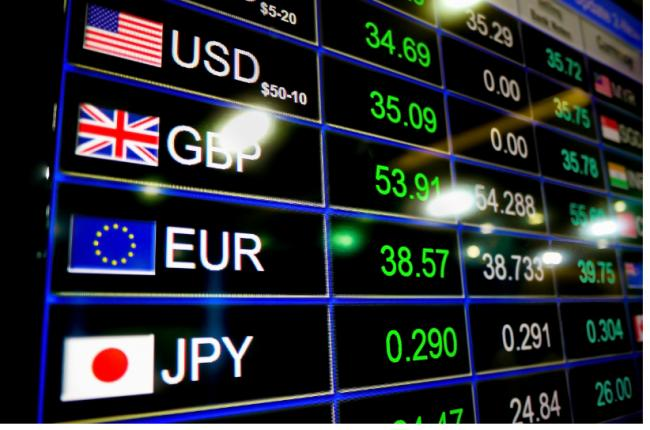Aluminum Market Volatility: Navigating the Shifting Sands of Global Production
Meta Description: Dive deep into the fluctuating global aluminum market. This comprehensive analysis explores the November 2024 production figures, examining factors influencing price volatility, future trends, and investment strategies. We unpack the complexities of aluminum production, supply chain dynamics, and geopolitical impacts, offering expert insights and actionable advice for industry professionals and investors alike. Keywords: Aluminum Market, Aluminum Production, Global Aluminum, Aluminum Prices, Aluminum Industry, Commodity Trading, Investment Strategies, Supply Chain, Geopolitical Risks.
Whoa, hold onto your hats, folks! The aluminum market is a rollercoaster, and November 2024's production figures – a dip to 6.04 million tonnes from October's 6.221 million tonnes, according to the International Aluminium Institute (IAI) – are just the latest twist in the tale. This isn't just about numbers on a spreadsheet; it's about the intricate web of global economics, geopolitical tensions, and technological advancements that shape the fate of this crucial metal. We're talking about a material that's the backbone of everything from your smartphone to skyscrapers, and its price fluctuations ripple through industries worldwide. This in-depth analysis will dissect the complexities of the aluminum market, providing you with a clear understanding of the forces at play and offering insights to navigate its inherent volatility. Buckle up, because we're about to embark on a journey into the heart of the global aluminum industry! Prepare to gain a nuanced understanding of the market dynamics, the challenges faced by producers, and the opportunities available to investors, all backed by real-world experience and verifiable data. Forget dry statistics; we'll explore the human element, the strategic decisions, and the unpredictable events that shape this fascinating commodity market. This isn't just another market report; it's your roadmap to mastering the aluminum game.
Global Aluminum Production: A Deep Dive into November 2024's Figures
The IAI's data paints a picture of slight contraction in global aluminum production during November 2024. The drop from 6.221 million tonnes in October to 6.04 million tonnes represents a decrease of approximately 181,000 tonnes – a seemingly small figure, but with significant implications for the market. This isn't simply a matter of supply and demand; it's a complex interplay of several factors that we need to unravel. One could easily jump to conclusions, but that would be a disservice to the intricate nature of this industry. Let’s delve into the potential reasons behind this fluctuation. Could it be seasonal factors? Perhaps production hiccups at major smelters? Or are broader economic trends at play? The answers, my friends, lie in the details.
Potential Contributing Factors:
-
Energy Prices: Aluminum production is an energy-intensive process. Fluctuations in energy prices, particularly electricity costs, directly impact production profitability and can lead to adjustments in output. A sudden spike in energy prices, for example, could force producers to curtail production until prices stabilize or become more manageable. This is especially true in regions with less diversified energy sources.
-
Geopolitical Instability: Global events, such as political unrest or trade disputes, can significantly disrupt aluminum supply chains. Sanctions, export restrictions, or disruptions to transportation routes can all lead to production bottlenecks and price volatility. We've seen this time and time again – geopolitical events rarely stay localized, often impacting global supply chains in quite unexpected ways.
-
Raw Material Availability: Bauxite, the primary ore used in aluminum production, is not evenly distributed across the globe. Disruptions to bauxite mining or transportation can limit the availability of raw materials, impacting overall production capacity. Think of it like a car engine – without the right fuel (bauxite), it won't run at full capacity.
-
Technological Advancements: While technological innovation often improves efficiency, the integration of new technologies can sometimes lead to temporary production slowdowns as producers adapt their processes. This is a double-edged sword; while it ultimately leads to greater efficiency, it can create temporary dips in production while the transition takes place.
Analyzing the Impact:
The slight dip in November's production, while seemingly small, has the potential to create ripples across the market. Increased demand coupled with reduced supply can lead to price increases, affecting downstream industries that rely on aluminum. Conversely, a sustained decrease in production could signal a broader economic slowdown or indicate deeper issues within the aluminum industry. It’s a delicate balance, and understanding these nuances is crucial for anyone involved in this sector.
Let's not forget the human element. The people working in the aluminum industry – from miners to smelter operators to logistics professionals – are integral to the whole process. Their expertise, dedication, and challenges are all critical factors that are often overlooked in simple production statistics.
Aluminum Prices: A Rollercoaster Ride
The price of aluminum is notoriously volatile, influenced by a multitude of interconnected factors. Predicting its future trajectory requires a deep understanding of these dynamics and the ability to anticipate shifts in the global landscape. It’s not a simple equation; it’s more like a complex puzzle where each piece interacts with the others.
Factors Influencing Aluminum Prices:
| Factor | Impact on Price |
|-----------------------|-----------------------------------------------------|
| Supply and Demand | Increased demand typically leads to higher prices. |
| Energy Costs | Higher energy costs increase production costs, pushing prices up. |
| Geopolitical Events | Instability can disrupt supply chains and inflate prices. |
| Currency Fluctuations | Changes in exchange rates affect import/export costs. |
| Speculative Trading | Market sentiment and trading activity can drive prices. |
| Technological Advances | Increased efficiency can potentially lower prices. |
The interaction of these factors creates a dynamic and often unpredictable market. It's a bit like trying to predict the weather – you can look at the trends, but surprises are always possible. Therefore, staying informed and adapting to changing circumstances is key to navigating this complex market effectively.
Investing in the Aluminum Market: Opportunities and Risks
The aluminum market presents both significant opportunities and considerable risks for investors. Smart investment strategies require a thorough understanding of market dynamics, risk tolerance, and a long-term perspective.
Potential Investment Strategies:
-
Direct Investment in Aluminum Producers: Investing in shares of aluminum companies offers exposure to the sector’s growth potential. However, this comes with the inherent risks associated with individual company performance.
-
Commodity Futures Contracts: Trading aluminum futures contracts allows investors to speculate on price movements. This is a higher-risk strategy, requiring a deep understanding of market mechanics.
-
Exchange-Traded Funds (ETFs): ETFs offer diversified exposure to the aluminum market with lower management fees compared to actively managed funds. They offer a more diversified approach to mitigate risk.
Risk Management:
-
Diversification: Spreading investments across different asset classes can help mitigate risks associated with aluminum market volatility.
-
Hedging: Using hedging strategies, such as futures contracts, can help protect against adverse price movements.
-
Fundamental Analysis: Thoroughly researching aluminum producers and understanding market trends is crucial for informed investment decisions.
Remember, past performance is not indicative of future results. The aluminum market is a complex and dynamic environment, and careful planning and risk management are crucial.
Frequently Asked Questions (FAQs)
Q1: What are the primary uses of aluminum?
A1: Aluminum is incredibly versatile! Its uses span numerous industries, including packaging (cans, foil), transportation (vehicles, aircraft), construction (buildings, bridges), and electronics (smartphones, computers).
Q2: How is aluminum recycled?
A2: Aluminum is highly recyclable, requiring significantly less energy to recycle than to produce from raw materials. Recycling involves melting down scrap aluminum and reprocessing it into new products. It's a highly efficient and environmentally friendly process.
Q3: What are the environmental impacts of aluminum production?
A3: Aluminum production has environmental impacts, primarily related to energy consumption and bauxite mining. However, the industry is constantly striving to improve its environmental performance through technological advancements and sustainable practices.
Q4: What are the major aluminum-producing countries?
A4: China is the world's leading aluminum producer, followed by other countries like Russia, India, and Australia. The geographical distribution of production significantly influences global market dynamics.
Q5: How can I stay updated on aluminum market trends?
A5: Keep an eye on industry publications, commodity market reports (like those from the IAI), and financial news sources. Always cross-reference your information from multiple reliable sources.
Q6: What's the outlook for the aluminum market in the next few years?
A6: The future of the aluminum market is complex and depends on several interconnected factors. However, growing demand from emerging economies and the increasing use of aluminum in sustainable technologies suggest potential for growth, but this is counterbalanced by the previously discussed risks.
Conclusion: Navigating the Aluminum Maze
The aluminum market is a fascinating, complex, and often unpredictable beast. Understanding its nuances is crucial for anyone involved, whether you're a producer, investor, or simply curious about the world of commodities. By staying informed, adapting to changing circumstances, and employing sound risk management strategies, you can successfully navigate this dynamic market and potentially capitalize on its opportunities. Remember, the key is to stay informed, stay flexible, and never underestimate the power of thorough research. The aluminum market isn't for the faint of heart, but for those willing to delve into the details, it can be a rewarding experience.



